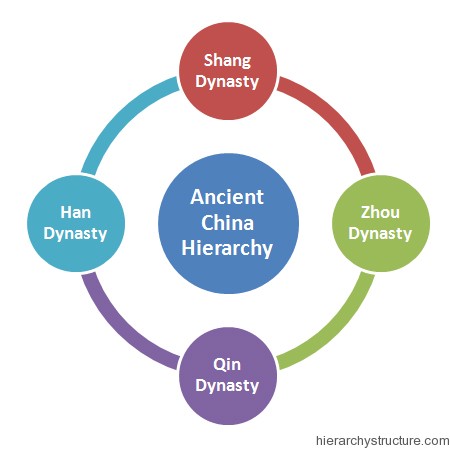The most important aspects of an Ancient China hierarchy are the patterns of dynastic rise and fall, intermittent aggression from northern aliens, a varying degree of openness to the cultural influences of the outside world and the dynamics of the social harmony. In this particular journal, we will discuss about the different dynasties that ruled ancient China and the various effects they had on the different social Ancient China classes of people. There were mainly four dynasties prevalent in the ancient China. The four main dynasties were:

- Shang Dynasty
- Zhou Dynasty
- Qin Dynasty
- Han Dynasty
Let’s get into some details about the above dynasties.
Shang Dynasty
- The Shang dynasty consisted of thirty kings and seven different capitals.
- The Shang people had bronze weapons and bronze vessels connected with worship. The Shang people grew grains such as millet and some wheat that were harvested with the help of sickles.
- One of the important characteristics about the Shang people was that they invented writing. The writings were mainly found on the oracle bones, which were collected from a number of animals. Many of the writings were also found on the bronze and stone.
- The Shang people worshipped “Shang Ti”. A major aspect of the Shang religion was sacrifice to the gods and the ancestors.
Zhou Dynasty
- The Zhou Dynasty emerged as semi-nomadic tribes that lived to the west of the Shang kingdom. Due to their roving ways, they learned as how to work with people of different cultures.
- The Zhou consequently became stronger than the Shang and they defeated Shang in warfare in 1040 BC. After the victory of Zhou, they built their capital in Xi’an.
- The Zhou adopted most of the lifestyle patterns of the Shang dynasty. They utilized the knowledge of Shang artisans in a wide range of aspects.
- The Zhou also adopted the same patterns of writing system and conducting the administrative functions as used by the Shang people. The Zhou practiced the cult of heaven and they banned human sacrifice. They mostly worshiped suns and the stars.
Qin Dynasty
- The Qin dynasty came to power in 221 BC. They were one of the western states, who conquered the Warring States and thereby unifying China for the first time in the ancient China hierarchy.
- The Qin dynasty was the strongest dynasties militarily. They utilized various new technologies in warfare. They mainly used cavalry.
- The Qin dynasty made various changes meant to unify China and improve the administrative procedures.
- The Emperor was the highest rank and the leaders of the commanderies had to report to the Emperor in writing.
Han Dynasty
- After Liu Bang, prince of Han defeated the Qin army in 206 BC, the era of Han dynasty of the ancient China hierarchy began.
- When Liu Bang conquered the Qin, he created his new capital named Ch’ang-an. The king kept most of the rules and regulations similar to as of the Qin dynasty.
- Like Qin, the main goal of Han was also to unify China.
- During the Han dynasty, education became an important aspect.
